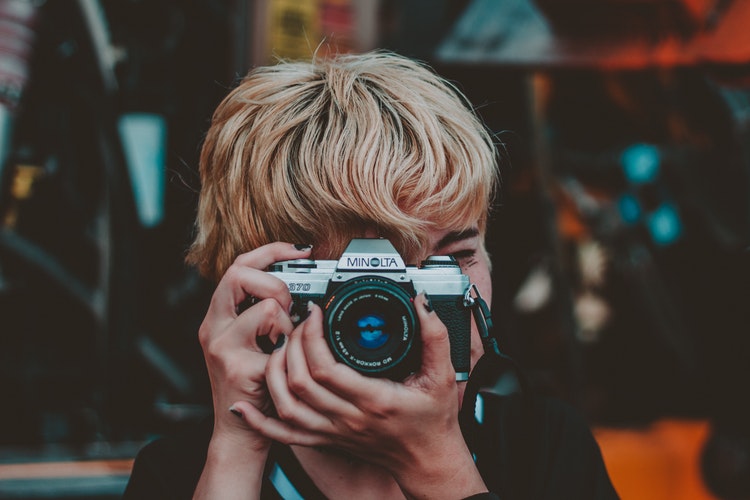So pleased that my article was published today as a Women on Writing Spotlight article. Check out the prompt I share as well:
“Abounding Images: An Invitation to Imagery Power: Photography for Writers”
By Melanie Faith
I found three rolls of brand-new film in a drawer earlier this week that I’d forgotten I’d purchased. It felt a little bit like unwrapping a Christmas gift to myself. Eager to head into the great weather, I took my ‘90s Canon Rebel outside for a few nature shots. The heft of the camera body nestled in my hands just right. Working with a physical, clicky dial to blur the background and focus on the foreground was like stepping back into a favorite pair of blue jeans—comforting and the perfect fit. Need I say that I took the rest of the roll and returned to my desk, smiling?
I’ve also been taking a lot of photos with my cellphone camera and find it a wonderful photographic experience, too. It is featherweight, and I can take as many pictures as I please. Cellphone cameras have come a very long way in the past ten years. Smart phones are equipped today with much better software and make sharper photographs than any of my first digital cameras. And they’re quite easy to use, and super handy. Rare is the person without a phone as a near-constant companion, which (of course) makes them absolutely the best for capturing inconspicuously as we go about our daily lives. And sharing cellphone photos is so easy it’s a dream.
Whether you prefer making photos with an old-school film camera that takes film or film cartridges, taking pictures with your cellphone, or a combination of both, there’s something meaningful and meditative about the art of photography. Much like the craft of writing, we begin to see our surroundings, our daily lives, and even ourselves a bit differently, a bit better in some ways, by taking the time to focus on elements we might previously zip past on our way to the rest of our appointments and to-do lists. The fact that no two people see the same images in the same way nor interpret them in the same way enhances our development as artists.
Making a photograph, like making a poem or a short story or a song or a chapter in a novel or an essay, is deeply personal. We have so many options that it’s exhilarating. We get to choose the subject. We get to choose the angle we take the image from. We get to choose the crop or zoom of the photo. We get to choose if we print the photo to make it a physical object in the world or if we keep it a digital file. We get to choose if we make the photo part of a series on a subject or if the photo is a one-off and stands alone. We get to choose light source and time of day and if we scan or upload the photo to software to alter its hues (hello, black and white!) or shoot in black and white mode or with b & w film.
It is in making these choices, often intuitively and in quick succession and very frequently learning and experimenting as we go, that we grow in other art forms as well.
Thinking about making a better photograph certainly continues to influence and encourage my poetry as well as my prose. Photography, much like writing and other art forms, focuses on the importance of the image, the resonance of created expression, and the great fun and challenge when we take the world as we experience it and offer a new creation that very likely will connect with other people who themselves make writing and other art.
There’s no prerequisite needed, and I’ve had students who made visceral, beautiful, jaw-dropping photos from disposable cameras, phone cameras, underwater cameras, instant cameras, pinhole cameras, film cameras of many makes, and even from photosensitive photographic paper.
The field of photography is wide open to individual interpretation and vision. Begin where you are, with that little “Hmmm, that’s interesting” when you’re out on a morning walk, and see where it takes you. One snap, one click, one moment documented at a time.
Try this prompt: Make a photo today of an object someone else uses every day. Aim to show a special quality about this object—whether its shape, its size, its hue, its placement in the home or outside, or some other quality. After taking the photo, either write a few sentences describing this object, why you chose it, and who uses it OR create a character who uses this object and write about that character for fifteen or twenty minutes. What would happen if the character reached for the object and it was missing? Go!
***
My online class Imagery Power: Photography for Writers starts Monday, July 3rd. Sign-ups open: to register, clickety-click!
I also wrote a fun craft book called Photography for Writers that’s packed with photo tips and prompts, sure to get your writing and your camera inspired. Get a signed copy here at Etsy or through Amazon.



